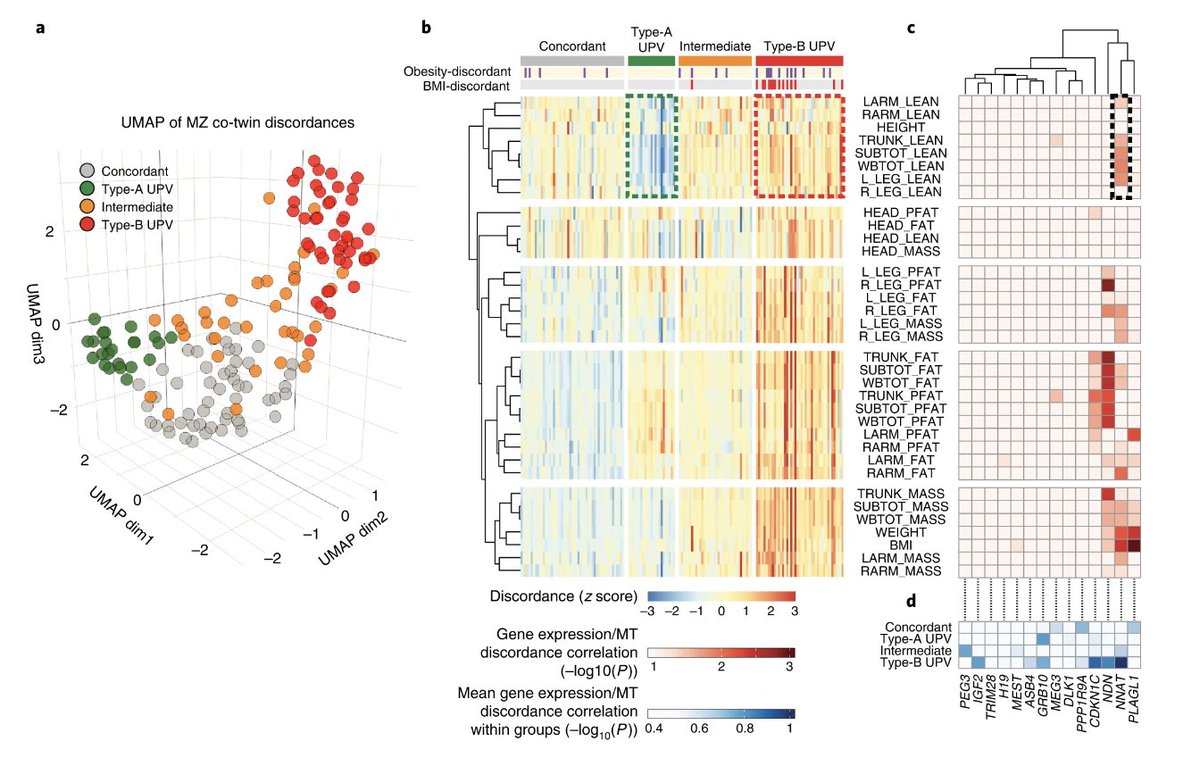
Two’s Two’s Two’s - Excited to share our study finding evidence of 2 major subtypes of obesity. Hope these can eventually help support more accurate understanding, diagnosis & treatment of #obesity and #diabetes. go.nature.com/3eNJF1s 

Two patterns of Twin discordance – All started with data-driven finding of 2 major patterns of MZ twin discordance using a dimensional reduction approach. Thank you @TwinsUKres for pioneering cohort and generosity of your staff, funders and participants! nature.com/articles/s4225…
The discordance patterns suggest two forms of human phenotypic plasticity. Type-A = adipose only | Type B = adipose, lean mass, and #insulin co-discordance. Interestingly, Type B shows far more #epigenetics differences suggesting developmental programming.
Examining the plasticity signatures in larger cohorts including adult and #childhoodobesity revealed 4 human metabolic clusters. Two of these were enriched for 2 ‘types’ of obesity, which we called Type-A and Type-B. nature.com/articles/s4225…
Type-B obesity shows higher lean mass, insulinemia, epigenetic dysregulation, inflammation and a unique NNAT/HDAC developmental programming signature compared to Type-A, at any given BMI
Functional genetics in isogenic mice reveals that the NNAT/HDAC-dependent regulation, underlying Type-B obesity and human plasticity likely results from a probabilistic and #insulin-dependent developmental programming and obesity. nature.com/articles/s4225…
The probabilistic (bi-stable) disease outcomes observed here challenge assumptions of additivity and linearity made in human #genetics analysis. These highlight a need for analytical models accepting switch-like genotype-phenotype effects for #GWAS.
Very interesting to notice about half the individuals in the obesity enriched clusters show BMI<30 - Are these also two classes of #normal_weight_obesity?
Most importantly, huge thanks to Yang, Luca, and the whole @PospisilikL(ab) and our very long list of collaborators across the globe who helped bring these findings together, including at @mpi_ie @UniLeipzig @koebenhavns_uni @ResearchCM @CSIC @UF @HIMAG_Leipzig @MaineHealth
Bam! First twitter thread ever!
• • •
Missing some Tweet in this thread? You can try to
force a refresh



